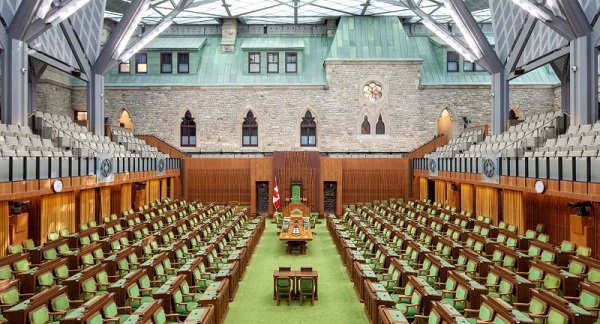Business
‘Got To Go’: Department Of Energy To Cut Off Billions Of Dollars’ Worth Of Biden-Era Green Energy Projects


From the Daily Caller News Foundation
By
“A lot of the push to keep these subsidies alive isn’t about good energy policy — it’s about keeping industries afloat that can’t meet reliability and affordability standards on their own.”
Energy Secretary Chris Wright said on Friday that his agency plans to cut billions in grant funds for Biden-era loans as the Trump administration conducts a review of the department’s $400 billion clean energy investments, a decision that energy policy experts who spoke with the Daily Caller News Foundation cheered on.
Before leaving office, former President Joe Biden squeezed $25 billion into the Department of Energy’s (DOE) Loan Programs Office (LPO) for various projects, with the bulk of the funds going toward renewable energy development. Wright’s newly announced plans to review and cancel a majority of the loans has the backing of several energy policy experts who told the DCNF that the LPO has stripped cash from taxpayers and contributed to U.S. grid instability.
“We’ve got a lot of reasons to be worried and suspicious about that,” Wright told Bloomberg in response to a question about the LPO. “Some of these loans will go forward, some of it, it’s too late to change course. A lot of them won’t go forward, but that’s a very careful review process that we’ve just put in place and just got a team to execute on.”
The LPO has previously dished out loans for nuclear energy, an industry championed by the Trump administration. However, among the loans finalized after the election were $6.57 billion to an electric vehicle manufacturing facility in Georgia and $289.7 million to solar energy development and battery storage in Massachusetts.
“[The LPO] may have been well-intended, but it’s morphed into a clean energy slush fund that dooms energy projects by making them tied to federal funding,” Gabriella Hoffman, the director of the Center for Energy and Conservation at Independent Women’s Forum wrote to the DCNF. “LPO investing currently undermines competition and market innovation of energy technologies. In the event it stays, however, it must be radically reformed to not prop up reliable energy sources like solar and wind.”
Notably, the rush to get these loans greenlit under Biden prompted a November inspector general report, which highlighted several potential risks to taxpayers related to the LPO, including concerns that the office may be moving too quickly to distribute funds, possibly at the expense of properly vetting loan applicants.
Other noteworthy projects approved under Biden’s watch included a $2.5 billion in loan for EV technology, 1.45 billion for a solar manufacturing facility in Georgia and $584.5 million for a solar photovoltaic (PV) system with an integrated battery energy storage system in Puerto Rico.
Founded in 2005, the loan office was created to help advance clean energy infrastructure, and it was increasingly active under the Obama administration, which approved a $535 million loan to Solyndra, a green energy company that collapsed just two years later. Activity slowed during President Donald Trump’s first administration, but under Biden, the office received a massive funding boost from Congress — totaling $400 billion — to support green tech firms.
“These past four years have been the most productive in LPO’s history,” LPO wrote in a fact sheet three days before Trump returned to the White House. “Under the Biden-Harris Administration, the Office has announced 53 deals totaling approximately $107.57 billion in committed project investment – approximately $46.95 billion for 28 active conditional commitments and approximately $60.62 billion for 25 closed loans and loan guarantees.”
“If the government’s going to use my money as a taxpayer through LPO investments, that money should be going to investments that actually provide reliable power,” André Béliveau, senior manager of energy policy at the Commonwealth Foundation told the DCNF. “A lot of the push to keep these subsidies alive isn’t about good energy policy — it’s about keeping industries afloat that can’t meet reliability and affordability standards on their own.”
While the majority of the LPO’s support in Congress and the White House has come from the left, some right-of-center organizations recently urgedWright on April 14 to “preserve” the LPO for the sake of “American dominance.” The organizations argue that the LPO plays a “critical role” in enabling “new nuclear power development.”
“LPO continues to play a critical role in financing infrastructure that enables new nuclear power development, revitalizes domestic mineral production, and modernizes both grid and gas systems — all central to the administration’s goals of lowering energy costs, reshoring manufacturing, and achieving energy dominance,” the letter reads.
Subsidizing energy projects that are not able to survive on their own in the free market is questionable, Amy Cooke, the co-founder and president of Always on Energy Research and the director of the Energy and Environmental Policy Center, told the DCNF. “The calls to eliminate it are well-founded, and at the very least, it should be dramatically reformed,” she said. “If the market isn’t interested in it, is it the responsibility of the Department of Energy to fund [these projects]?” she asked.
“We should be funding improvements for firming the grid and not arbitrarily add more intermittency,” Béliveau said in reference to wind and solar projects that provide less inertia — the grid’s ability to continue running smoothly after a disturbance occurs between energy supply and demand for the electrical grid.
“If it’s going to exist, then reforms need to make sure that we’re being good stewards of taxpayer dollars,” he added, pointing to natural gas and nuclear as options that could help “firm the grid.”
“The Trump administration’s version of energy dominance has created a source-neutral way of picking winners and losers,” he continued, noting that reliability, affordability and security are the priorities of the administration, as opposed to a climate-change centric approach to energy policy.
Trump declared a national energy emergency on his first day back in office and signed an executive order to boost domestic energy generation. He signed a series of other EOs within his first 100 days in office to speed up the permitting process and clear red tape for several industries including coal and critical mineral mining.
Business
EPA to shut down “Energy Star” program

 MxM News
MxM News
Quick Hit:
The Environmental Protection Agency is planning to shut down its long-standing Energy Star program, which has certified energy-efficient appliances for over three decades. The move is part of a sweeping agency reorganization that also includes eliminating the climate change office and other environmental initiatives not mandated by law.
Key Details:
- EPA officials announced the dismantling of the Energy Star program in a staff meeting on May 6, 2025.
- The agency is eliminating its climate-related divisions, including those overseeing Energy Star and greenhouse gas reporting.
- The move is framed as part of a broader restructuring to prioritize statutory obligations and reduce government overreach.
Diving Deeper:
In a significant shift for federal environmental policy, the Environmental Protection Agency will eliminate the Energy Star program, a popular certification used to identify energy-efficient home appliances like refrigerators, dishwashers, and dryers. Internal documents and a recorded staff meeting reveal that EPA leadership is dismantling entire divisions focused on climate change and voluntary energy initiatives.
Paul Gunning, director of the EPA’s Office of Atmospheric Protection—which is also being cut—told staff the agency would “de-prioritize and eliminate” all climate-related work outside of what’s legally required. The Energy Star program, created in 1992 under President George H.W. Bush, has helped save American households and businesses over $500 billion in energy costs and prevented billions of metric tons of greenhouse gases from entering the atmosphere.
Supporters argue the program has been a bipartisan success story. Nearly 90% of U.S. consumers recognize the Energy Star label, and manufacturers have long relied on it to market efficient products. Even the U.S. Chamber of Commerce and major industries, from lighting to food-equipment makers, have urged the EPA to keep it in place. A joint letter in March from dozens of trade organizations to EPA Administrator Lee Zeldin warned that ending the program would not benefit Americans.
Critics of the move, like Paula R. Glover of the Alliance to Save Energy, say the Energy Star program costs just $32 million annually but delivers $40 billion in utility bill savings. “Eliminating the Energy Star program is counterintuitive to this administration’s pledge to reduce household costs,” she said. Glover added that with electricity demand set to rise 35–50% by 2040, energy-saving measures are more important than ever.
The Biden-era EPA heavily prioritized climate policy and environmental regulation, often blurring the lines between environmental stewardship and bureaucratic overreach. In contrast, the current administration—under 47th President Donald Trump—is refocusing the agency toward its statutory mission, aligning with the broader conservative agenda of streamlining government and cutting redundant or ideologically-driven programs.
While Trump previously attempted to defund Energy Star during his first term, the effort failed amid bipartisan concern that privatization could lead to lowered standards. The current plan appears to accomplish the same goal through internal restructuring, cutting not just Energy Star but programs related to methane emissions reduction, climate science, and policy.
Notably, the agency’s largest union has cried foul over how the reorganization was handled. Marie Owens Powell, its president, accused the agency of “union busting” after being blocked from attending reorganization meetings. Staff have been told they may be reassigned or let go as the EPA scales back to staffing levels not seen since the Reagan administration.
For an agency that has long served as the regulatory spearhead for the left’s climate agenda, this realignment could represent a return to core environmental functions—clean air and water—while removing the taxpayer burden of subsidizing climate-centric programs with questionable returns. The decision also signals a shift away from corporatist alliances that prop up select industries under the guise of energy policy.
Business
Innovative Solutions Like This Plan To Provide Power For Data Centres Will Drive Natural Gas Demand For Decades


From the Daily Caller News Foundation
By David Blackmon
The dramatic expansion of the number and scale of planned datacenter projects across the United States has generated a great deal of news over the last year. The central question in many of those stories centers around the power needs of these projects, and how the power will be generated.
Early developers hyped their preference to use electricity generated by wind and/or solar to power their projects but found the 99.999% datacenter uptime requirements can’t be met by these intermittent power sources, even when backed up by stationary batteries.
With new nuclear projects facing permitting times of 10-15 years and coal being crowded out by emissions regulations, more recent speculation has centered heavily on natural gas as being the fuel of choice for developers whose projects won’t be interconnected into a regional power grid. Natural gas generation is cheaper and faster to build than nuclear, and, while anti-fossil fuel activists complain that gas still comes with emissions, it presents a far cleaner alternative to coal.
In Wyoming, a group of three companies said this week they’ve agreed to a joint project that also satisfies the emissions critics. In a release dated May 6, data center developer Prometheus Hyperscale, Wyoming’s largest gas producer PureWest Energy, and carbon capture and storage (CCS) developer Frontier Carbon Solutions, LLC, rolled out what they call “a first-of-its-kind partnership focused on driving innovation and sustainability while contributing to Wyoming’s long-term economic growth.”
In simple terms, the plan goes like this:
- Prometheus will permit and build the datacenter;
- PureWest will produce and supply the natural gas to a nearby power plant operated by an independent power provider from its Wyoming production portfolio, which it boasts maintains “industry leading emissions performance with a rigorous Measurement, Monitoring, Reporting and Verification (MMRV) program and ISO 14067 verification;”
- Frontier will capture biogenic carbon dioxide from across the Mountain West and sequester it in underground formations in Southwestern Wyoming; and
- Frontier will sell traceable carbon removal credits to Prometheus.
Through entering into these various agreements, a datacenter sporting a net-zero emissions profile is created. This not only embellishes the clean energy scorecards for the three companies involved in the partnership, but also for customers who purchase the computing power from the datacenter, as well as the operators of processing plants and transportation systems which move both the natural gas and the carbon dioxide.
“PureWest’s goal to be the region’s energy supplier of choice is rooted in innovation and cutting-edge technology, and today’s exciting announcement reflects our ongoing mission and progress,” said Ty Harrison, President and CFO of PureWest said in a release. “We’re proud to partner with Prometheus and Frontier because this project affirms the critical role that verified low-carbon natural gas will play in sustainably meeting the growing energy needs of AI and its related infrastructure. PureWest is committed to ensuring Wyoming continues to be a leader in delivering scalable energy and decarbonization solutions for the data-driven future of the United States.”
While the joint venture is fairly complex with a number of moving parts, it actually represents a pretty ingenious solution. Once up and running, the partners end up creating a major datacenter with the same carbon footprint as one powered by wind or solar would have, but which will enjoy the added benefit of being able to meet its 99.999% uptime requirements.
But it’s more than that. As the Trump administration’s energy and climate regulatory agenda moves ahead to consolidation, these companies will also avoid running into the reality of so many U.S. wind and solar projects becoming financially unsustainable when the endless stream of rising subsidies their business models require are inevitably reduced or cut off entirely.
As the religious global fervor driven by climate alarmism continues its inevitable fade, producers of American natural gas like PureWest will find themselves presented with a wide array of innovative opportunities like this one. Those opportunities will be driven by customers and potential partners who need the combination of abundance, affordability, reliability, speed of development and low emissions profile that only natural gas is capable of providing.
Anyone who still believes that oil and gas is a dying industry is in for a very rude awakening.
David Blackmon is an energy writer and consultant based in Texas. He spent 40 years in the oil and gas business, where he specialized in public policy and communications.
-

 Crime2 days ago
Crime2 days agoInside B.C.’s Cultus Lake Narco Corridor — How Chinese State-Linked Syndicates are Building a Narco Empire in Canada
-

 Energy2 days ago
Energy2 days agoIt’s time to get excited about the great Canadian LNG opportunity
-

 Business2 days ago
Business2 days agoTrump praises Carney at White House, says ‘never say never’ about 51st state
-

 Business2 days ago
Business2 days agoCanada’s Election Is Over And Now The Real Work Begins
-

 Business1 day ago
Business1 day agoCarney pivots from anti American campaign, embracing US and hailing Trump as “transformational president”
-

 Daily Caller23 hours ago
Daily Caller23 hours agoMisguided Climate Policies Create ‘Real Energy Emergency’ And Permit China To Dominate US
-

 Also Interesting2 days ago
Also Interesting2 days agoData Loss Prevention Strategies to Improve Google Drive Security
-

 Business1 day ago
Business1 day agoTop business group warns Carney’s ‘net zero’ push spells disaster for Canada’s economy





